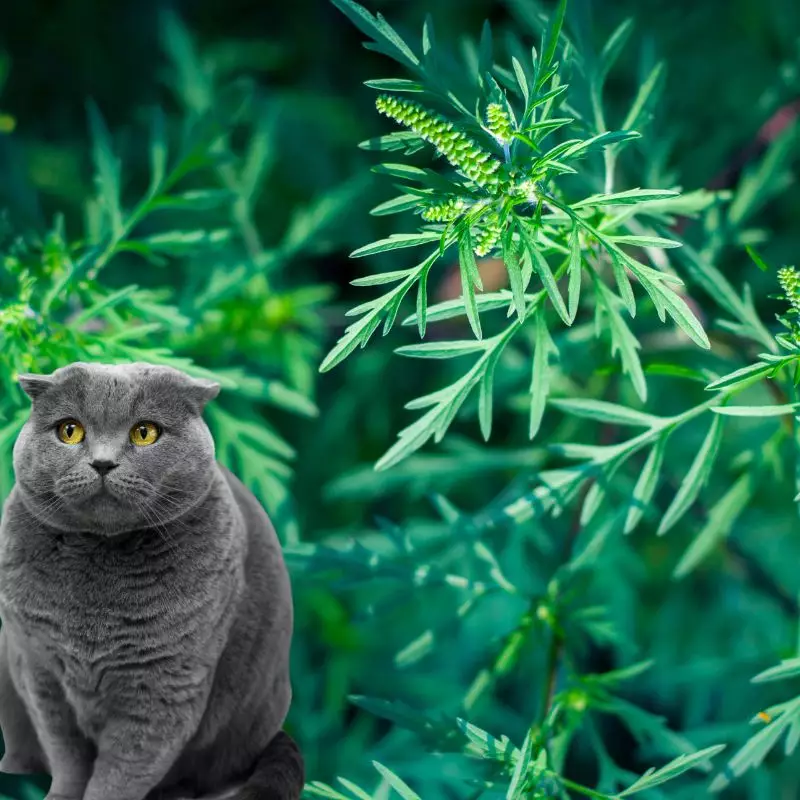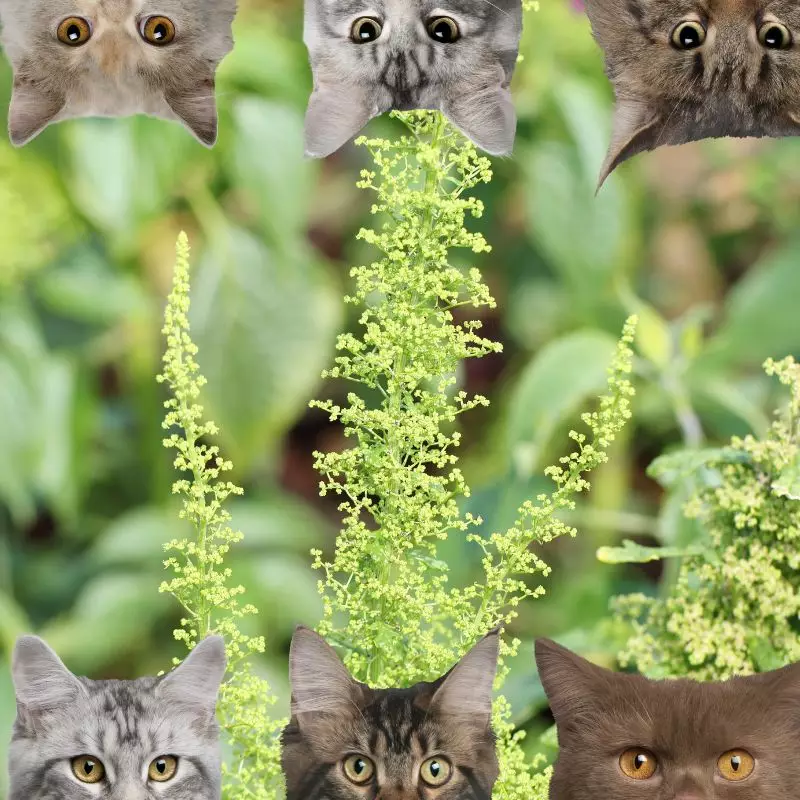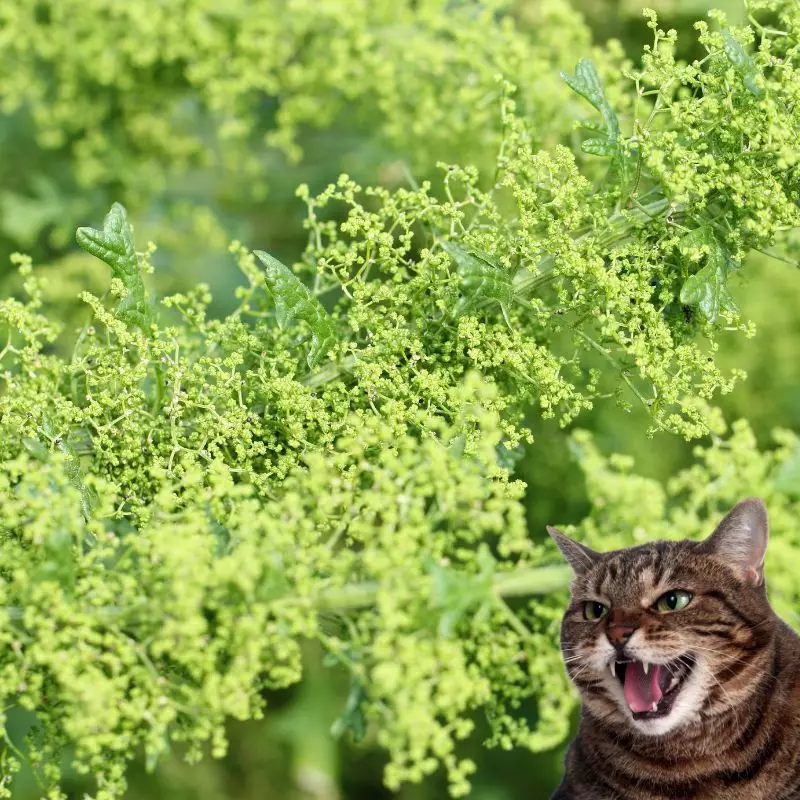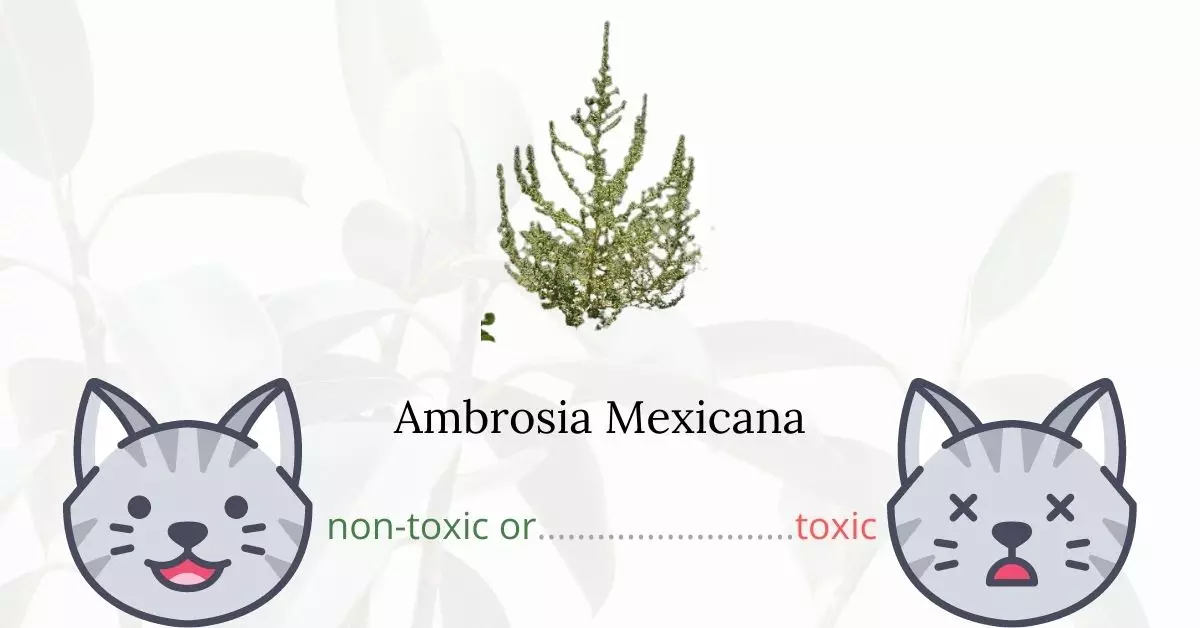Ambrosia Mexicana, also known as Jerusalem Oak and Feather Geranium, contains substances that can potentially be harmful to cats when consumed. Specifically, this plant contains cyanogenic glycosides, nitrates, and oxalates, which, under certain conditions, may lead to nitrate poisoning in felines. Upon ingestion, the nitrate present in Ambrosia Mexicana is converted to nitrite, which can inhibit a cat’s ability to carry oxygen in the bloodstream.
It is essential to note that this article has been written in collaboration with a team of experienced DVMs (doctors of veterinary medicine). Their invaluable expertise allows us to provide accurate and up-to-date information on the potential risks associated with various plants, with a particular emphasis on Ambrosia Mexicana in this case. Furthermore, our information is supplemented by research from high-authority websites such as ASPCA and PetMD, ensuring that our readers receive well-rounded and authoritative guidance on the topic.
Clinical Signs of Ambrosia Mexicana Plant Poisoning in Cats

When a cat comes into contact with, inhales the scent of, or consumes the Ambrosia Mexicana plant, several clinical signs may become evident due to the harmful substances present in the plant. Here’s a breakdown of these signs and their underlying causes:
- Mucus Membranes Changing Hue (from light pink to gray): This indicates a decrease in the oxygen levels in the blood, a result of nitrate converting to nitrite, which affects the blood’s oxygen-carrying capacity.
- Tissue Hypoxia: Directly related to the nitrite presence, this condition means that the tissues aren’t receiving adequate oxygen, leading to cell damage or death.
- Ataxia: A lack of muscle coordination, possibly due to the decreased oxygen supply to the brain and muscles, impacting their normal functions.
- Weakness and Muscle Tremors: Resulting from the tissue hypoxia, muscles become weak and may start trembling due to a lack of adequate oxygen supply.
- Low Body Temperature: Reduced metabolic activity due to nitrite poisoning can lead to a drop in the cat’s core temperature.
- Irregular Heartbeat: The heart struggles to pump oxygen-depleted blood, leading to arrhythmias.
- Polyuria (Frequent Urination): The body’s attempt to flush out toxins might lead to increased urine production.
- Anxiety and Respiratory Distress: As the body senses the lack of oxygen, a feeling of anxiety and increased effort to breathe becomes evident.
- Dyspnea (Difficulty Breathing): Reduced oxygen levels and potential inflammation of the respiratory tract make breathing difficult.
- Abdominal Pain, Diarrhea, and Vomiting: These can be direct reactions to ingesting the toxins, as the digestive system tries to expel them.
- Hypersalivation: A possible sign of nausea or gastrointestinal irritation caused by the plant’s toxins.
- Anorexia: The cat might lose its appetite due to nausea or a general feeling of malaise caused by the poisoning.
- Depression: As the toxins affect the brain and overall energy levels, the cat might show signs of depression or reduced interest in its surroundings.
- Death: In extreme cases and without timely intervention, the poisoning can unfortunately lead to the cat’s death.
It’s crucial to consult a veterinarian immediately if you suspect your cat has been exposed to Ambrosia Mexicana or if it displays any of these clinical signs.
First Aid and Treatment of Ambrosia Mexicana Plant Poisoning in Cats

Veterinarians usually use Methylene blue to treat Ambrosia Mexicana poisoning. This will be administered by the vet intravenously. Methylene blue functions by converting ferric iron in hemoglobin or red blood cells to ferrous iron. The vet may use methylene blue and mineral oil together. Mineral oil, when used as a cathartic, can aid in faster defecation and removal of nitrate material from the feline’s gastrointestinal tract.
Recovery from Ambrosia Mexicana Poisoning in Cats

A cat has a good chance of surviving an ambrosia Mexicana poisoning if a diagnosis is made quickly and treatment is effective. However, if the clinical signs were not detected until the fatal chemicals of the ambrosia plant had been absorbed, the cat’s chances of full recovery are bleak.
Prevention
The best way to avoid nitrate toxicity in cats is to remove all Ambrosia Mexicana plants from your cat’s environment or confine the feline especially when you are not home.
If you love plants but have cats at home, check out these lists:





